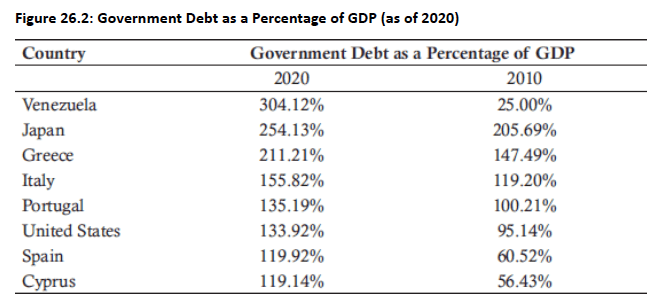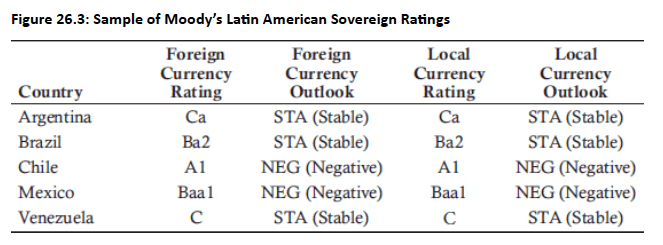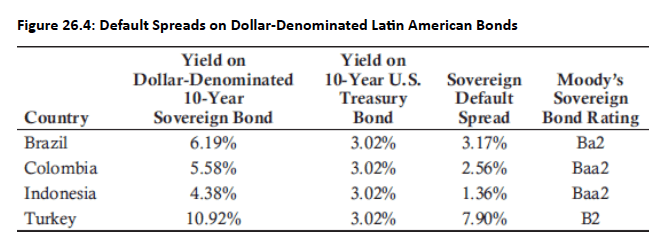Book 2. Credit Risk
FRM Part 2
CR 8. Country Risk

Presented by: Sudhanshu
Module 1. Country Risk
Module 2. Sovereign Default Risk
Module 1. Introduction to Country Risk

Topic 1. Introduction to Country Risk
Topic 2. Economic Growth Life Cycle
Topic 3. Political Risk
Topic 4. Legal Risk & Economic Structure
Topic 5. Evaluating Country Risk




Topic 1. Introduction to Country Risk
-
What is Country Risk?
-
The risk of investing in a particular country due to factors unique to that country.
-
Increases for investors who invest in non-domestic companies, mutual funds, or ETFs.
-
Also affects companies that rely on growth in foreign markets.
-
Government actions can directly influence country risk.
-
-
Key Sources of Risk:
-
Economic Growth Life Cycle
-
Political Risks
-
Legal Systems
-
Economic Structure (reliance on specific products/commodities)
-
Practice Questions: Q1
Q1. A portfolio manager for a hospital foundation is considering the inclusion of sovereign bonds in the fixed income portion of the foundation’s portfolio. Much to the surprise of his colleagues, the manager plans to purchase the bonds of a country that has long been under authoritarian rule. He cites “lower political risk” when asked about his investment decision. Which of the following statements is most likely what the manager meant by his assertion of lower risk?
A. Authoritarian regimes are more likely to control corruption in government agencies.
B. Government policies that may affect debt repayment are often more stable under an authoritarian regime.
C. Relative to a democracy, risks are greater on a day-to-day basis, but the effects are less detrimental overall.
D. In most authoritarian countries, property rights are protected and property disputes are settled quickly.
Practice Questions: Q1 Answer
Explanation: B is correct.
Some investors prefer the stability of investing in countries with autocratic governments because government policies are locked in and generally more predictable compared to democratic countries where an election can significantly change government policies. Risks in a democracy are continuous, but usually low. In contrast, risks in a dictatorship are discontinuous. Policies change much less frequently, but changes are often severe and difficult to protect against. The portfolio manager is willing to accept the bigger, discontinuous risk as a tradeoff for the more frequent, but less damaging, continuous risk.
Topic 2. Economic Growth Life Cycle
-
Early Growth & Emerging Markets
-
Higher risk compared to mature markets.
-
More vulnerable to setbacks.
-
Experience higher growth in recoveries but larger declines in GDP during downturns.
-
Example: During the 2008 financial crisis, emerging markets fell by 50%+, while U.S. and European markets fell by 25-30%.
-
Topic 3. Political Risk
-
Definition: A broad risk category encompassing government type, transfer of power, and other political factors.
-
Four Main Components:
-
Continuous vs. Discontinuous Risk:
-
Democracies: Continuous but generally low risk due to frequent policy changes via elections.
-
Authoritarian States: Discontinuous risk. Policies are stable but changes, when they occur, are often severe and difficult to protect against (e.g., wars, sudden policy shifts).
-
-
Corruption: Acts like an implicit tax, directly reducing company profits.
-
Transparency International ranks countries on perceived corruption.
-
-
Physical Violence:
-
Associated economic costs (insurance, security) and physical costs.
-
The Global Peace Index maps countries by their level of peace/violence.
-
-
Nationalization and Expropriation:
-
The risk that a government will seize assets or profits through arbitrary taxation or outright nationalization, often for less than true value.
-
Especially relevant for natural resource companies.
-
-
Topic 4. Legal Risk & Economic Structure
-
Legal Risk
-
Structure: The protection of property rights is key.
-
Efficiency: The speed with which legal disputes are settled. A slow system is akin to having no property rights protection at all.
-
A high-risk legal system can lead to lower investor appetite and lower share prices.
-
International Property Rights Index ranks countries based on protection levels.
-
-
Economic Structure
-
Concentration Risk: A country's disproportionate reliance on a single commodity or service (e.g., oil, tourism) increases risk.
-
A downturn in the demand for that product/service can devastate the entire economy.
-
The UN Conference on Trade and Development (UNCTAD) measures commodity dependence.
-
Topic 5. Evaluating Country Risk
-
Methods for Measurement:
-
Political Risk Services (PRS): Evaluates 100+ countries on political, economic, and financial risk dimensions.
-
Euromoney: Surveys 400 economists to assess country risk factors.
-
The Economist: Assesses currency, sovereign debt, and banking risks.
-
The World Bank: Compiles measures on corruption, government effectiveness, political stability, and rule of law.
-
-
Limitations of These Methods:
-
Methodologies may be more relevant to economists than investors.
-
No standardization across providers (different scales and scoring).
-
Scores are better for rankings than for absolute comparison (e.g., a score of 70 is not twice as risky as a score of 35).
-
Practice Questions: Q2
Q2. In an attempt to understand country risk, an analyst at Global Funds examines multiple sources of information to determine the truest measure of risk. She considers sovereign risk ratings, default risk spreads, and composite measures of risk. Which of the following sources relies on surveys of several hundred economists to measure sovereign risk?
A. Political Risk Services.
B. The Economist.
C. The World Bank.
D. Euromoney.
Practice Questions: Q2 Answer
Explanation: D is correct.
Numerous services attempt to evaluate country risk in its entirety. They include Political Risk Services (PRS), The Economist, Euromoney, and the World Bank. Euromoney surveys 400 economists who assess country risk factors and rank countries from 0 to 100, with higher numbers indicating lower risk.
Module 2. Sovereign Default Risk

Topic 1. Sovereign Default Risk
Topic 2. Foreign Currency Defaults
Topic 3. Local Currency Defaults
Topic 4. Consequences of Sovereign Default
Topic 5. Factors Influencing & Measures of Sovereign Default Risk
Topic 6. Shortcomings of the Sovereign Rating System
Topic 7. Credit Ratings, Default Spreads, and CDS Spreads






Topic 1. Sovereign Default Risk
-
Definition: The risk that a government will fail to make full and timely interest and principal payments on its debt.
-
Categories:
-
Foreign Currency Defaults
-
Local Currency Defaults
-
-
Sovereign default risk is often used as a proxy for a country's overall risk.
Topic 2. Foreign Currency Defaults
-
What are they? A country defaults on debt denominated in a foreign currency.
-
Why they happen: A country cannot print foreign currency to repay its debt.
-
Historical Context:
-
A large proportion of sovereign defaults are foreign currency defaults.
-
Greece had the largest default of $264 billion in 2012.
-
Historically, Latin American countries account for a large proportion of defaults, especially in the 19th century and early 1980s.
-
Practice Questions: Q1
Q1. Which of the following statements regarding foreign currency defaults is true?
A. African countries are responsible for the greatest number of defaults in the last 50 years.
B. Before the 20th century, no country had ever defaulted on funds borrowed in a foreign currency.
C. Latin America accounted for more than 60% of foreign currency defaults in the 1990s.
D. Countries are more likely to default on funds borrowed from foreign banks than on sovereign bond issues.
Practice Questions: Q1 Answer
Explanation: D is correct.
Historically, countries have been more likely to default on foreign bank debt than on sovereign bonds. Latin America is responsible for the greatest number of foreign currency defaults over the last five decades with more than 60% of defaults in each decade with the exception of the 1990s. Over the last 200 years there are many instances of default. The defaults primarily occurred in seven distinct time periods: 1824–1834, 1867–1882, 1890–1900, 1911–1921, 1931– 1940, 1976–1989, and 1998–2003. Thus, countries did borrow and default in the 19th century.
Topic 3. Local Currency Defaults
-
What are they? A country defaults on debt denominated in its own domestic currency.
-
Why they happen?
-
Gold Standard: Before 1971, a country's ability to print money was limited by its gold reserves.
-
Shared Currency: Countries in a monetary union (e.g., the Eurozone) cannot print their own currency to pay debt.
-
The Trade-off: A country may choose to default rather than printing money, which could lead to hyperinflation and currency devaluation. The decision is based on which option is less costly.
-
-
Exceptions: The document notes an exception where a local currency rating can be lower than a foreign currency rating, as was the case for India in March 2010.
-
India's Example: Local currency rating of Ba2 vs. foreign currency rating of Baa3 (Moody's). The foreign currency rating was higher in this instance.
-

Topic 4. Consequences of Sovereign Default
-
Historical: Defaults were sometimes followed by military intervention.
-
Modern Consequences:
-
Loss of Reputation: Makes future borrowing more difficult and expensive.
-
Market Turmoil: Stock and bond markets experience volatility.
-
GDP Decline: A typical decline of 0.5-2.0%, though short-lived.
-
Lower Sovereign Ratings: Ratings are often one to two notches lower for defaulting countries.
-
Trade Retaliation: A drop in bilateral trade (average 8%) that can last for years.
-
Fragile Banking Systems: A 14% probability of a banking crisis following a default.
-
Political Instability: Increased likelihood of changes in leadership.
-
Practice Questions: Q2
Q2. Following a sovereign default:
A. borrowing costs rise 1.0% to 2.5%, and the country is more likely to suffer a banking crisis.
B. countries are more likely to suffer banking crises and GDP growth generally falls 2.0% to 3.5%, but the drop is usually short-lived.
C. ratings fall one to two notches, and GDP growth falls between 0.5% to 2.0%.
D. trade retaliations are likely to occur but are short-lived, lasting only six months to one year.
Practice Questions: Q2 Answer
Explanation: C is correct.
Examining sovereign defaults leads to the following conclusions:
(1) gross domestic product (GDP) growth falls between 0.5% and 2.0% following a sovereign default, and the decline is short lived,
(2) ratings of countries that have defaulted at least once since 1970 are one to two grades lower than the ratings of similar countries that have not defaulted and borrowing costs are 0.5% to 1.0% higher with the effects lessening over time,
(3) sovereign default can cause trade retaliation, lasting up to 15 years, with export businesses most sharply affected,
(4) a banking crisis is more likely to follow a default, and
(5) sharp currency devaluations and changes in a country’s leadership often follow defaults.
Topic 5. Factors Influencing & Measures of Sovereign Default Risk
-
How Rating Agencies Measure Risk:
-
Rating agencies rate sovereign risks, which is an important component of assessing a country's credit risk.
-
Their assessments are based on their views on idiosyncratic and macroeconomic risks, including political risk.
-
This can lead to ratings that are similar across agencies, but may also diverge.
-
Rating changes are typically analyzed using rating transition tables, which indicate the probability of a rating change over one-year periods. For example, a BBB-rated sovereign had a 5.26% chance of being downgraded between 1975 and 2021.
-
-
Stability of Tax Receipts:
-
A larger and more stable tax base reduces risk.
-
Diversified economies tend to have more stable tax revenues and are less prone to default risk, as they are not overly reliant on one specific sector.
-
-
Sovereign Ratings vs. Default Risk:
-
Sovereign default risk is often used as a proxy for a country's overall risk.
-
Sovereign ratings are a key component in assessing this risk.
-
Countries have relied less on bank debt and more on issuing public bonds, which has given rise to analyzing country risk using sovereign default spreads.
-
-
Other Key Factors:
-
Level of Indebtedness: The most fundamental factor, typically scaled to a country's GDP.
-
Pension Funds and Social Services: Large commitments for these services increase default risk, especially in countries with aging populations.
-
Backing from Other Countries/Entities: Implicit backing from stronger economies (e.g., within the EU) can reduce perceived default risk, but this is not guaranteed.
-
Topic 5. Factors Influencing & Measures of Sovereign Default Risk


Topic 5. Factors Influencing & Measures of Sovereign Default Risk
Topic 6. Shortcomings of the Sovereign Rating System
-
Herd Behavior: Rating agencies may follow each other, leading to a lack of independent analysis.
-
The document refers to this as "herd behavior" which can impede the value of the ratings.
-
-
Timeliness: Rating changes may not happen quickly enough to reflect sudden shifts in a country's risk profile.
-
Sovereign ratings typically change less frequently than corporate bond ratings.
-
-
Rating Biases: Agencies may have inherent biases that influence their assessments.
-
The document mentions that different agencies may have "different views on idiosyncratic and macroeconomic risks" which can cause their ratings to diverge.
-
-
Methodology Relevance: Rating methodologies may not be directly applicable or meaningful to investors and businesses.
-
No standardization across providers (different scales and scoring).
-
-
Relative vs. Absolute Scores: Ratings are more useful for providing a relative ranking of risk rather than an absolute measure.
Topic 7. Credit Ratings, Default Spreads, and CDS Spreads
-
Sovereign Credit Ratings: Issued by agencies like Moody's, S&P, and Fitch.
-
An important component of assessing a country's credit risk.
-
Assesses the likelihood of default, using a standardized letter-based scale (e.g., AAA, BBB).
-
The document notes that ratings may diverge between agencies given their different views on idiosyncratic and macroeconomic risks, including their assessment of political risk.
-
The outlook column in Moody's ratings indicates the possibility of a change: NEG (Negative) suggests a potential downgrade, STA (Stable) suggests no change, and POS (Positive) suggests a potential upgrade.
-
-
Sovereign Default Spreads: The difference in yield between a sovereign bond and a benchmark risk-free bond (like a U.S. Treasury).
-
Reflects the market's perception of default risk. A wider spread indicates higher risk.
-
The document notes that countries have relied less on bank debt and more on public bonds, giving rise to the importance of analyzing country risk through default spreads.
-
-
Credit Default Swap (CDS) Spreads:
-
The annual premium an investor pays to insure against a sovereign default.
-
The spread is the cost of this insurance. A higher spread indicates a higher perceived risk of default.
-
Can be a more real-time measure of risk compared to static ratings.
-

Topic 7. Credit Ratings, Default Spreads, and CDS Spreads
CR 8. Country Risk
By Prateek Yadav
CR 8. Country Risk
- 95



